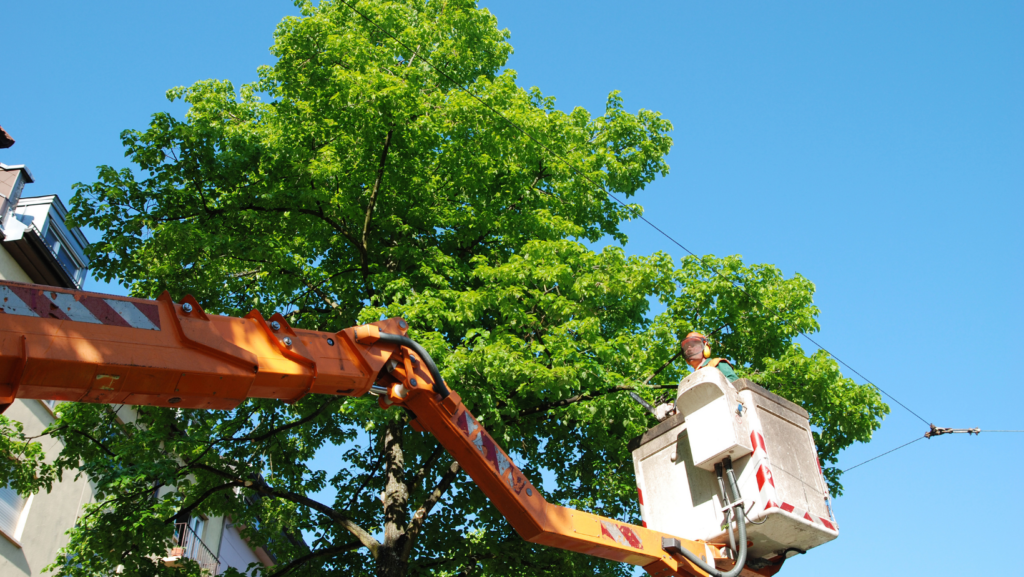Why Should You Trim or Prune a Tree?
There are many reasons you might want to trim or prune your trees. Maybe the tree is growing too tall and needs to be trimmed back for safety reasons, or there are dead branches that need to be removed.
No matter the reason, it’s essential to know how to properly trim or prune a tree so that you don’t damage it. This blog post will provide tips on trimming or pruning your trees safely and effectively.
Pruning Tips for Trees
Furthermore
Trimming trees for one of three reasons is typical: aesthetics, safety, or health. An example is as follows:
Aesthetics
Pruning a tree to keep its form and appearance is critical. However, it would help if you never tried to force a strange shape or size on a tree. It may be killed if the hedge requires too much trimming and pruning.
Safety
Broken branches and limbs can fall off, posing a safety hazard. Trees with branches that obscure your view should be cut down when driving down the street. Finally, tree limbs and branches occasionally come into contact with utility wires. To address this issue, contact your power provider.
Health
It’s possible to save a diseased tree by removing sick branches and limbs in a targeted manner. A decreased crown improves ventilation, which can be helpful. Trimming, or removing branches crossing or rubbing together, is necessary to prevent them from falling unintentionally.
How to Trim or Prune a Tree
It’s essential to understand the two before trimming or pruning your tree.
Trimming
Trimming removes branches that are growing out from the tree’s main stem. That is typically done for aesthetic reasons, such as shaping the tree or preventing it from growing too tall.
Pruning
Pruning is removing tree branches that are dead, diseased, or damaged. That is typically done for safety or health reasons, such as preventing broken branches from falling off and harming someone.

Here Are Some Tree Trimming Tips To Help You Get Started
Trimming or pruning a tree during its dormant season is almost always the best option. It’s unnecessary to prune a pine tree while it’s dormant; however, doing so is better than when active. The only time you may prune a pine tree during dormancy is if there’s a danger.
Make Sure The Branch Is Appropriate For The Task
Take into account the size of the branch you’ll be removing. It’s OK to remove a limb less than five millimeters in diameter. If the diameter is between five and ten centimeters, you should probably not do it. You should only cut branches more than 10 centimeters in diameter if there’s a compelling reason.
Use The Three-Cut Method
When removing a branch, make three cuts instead of just one. That will help you avoid damage to the tree.
First, make a notch on the underside of the branch about a foot from the tree trunk.
Second, make a notch on the top side of the branch, approximately six inches from the initial cut.
Finally, cut the branch off at the root.
Be Cautious Of Wounds
When trimming or pruning a tree, you will inevitably create wounds. These need to be correctly taken care of to prevent infection and disease. To do this, use a sharp knife to make clean cuts. You should also avoid damaging the bark or inner wood.
Go For The Weak Branches First
When removing too many branches, it’s best to start with the weak ones. These are typically the smaller branches. Taking care of these first makes it easier to handle the larger branches later.
Use The Right Tools
Make sure you have the right tools for the job. A hand pruner is usually sufficient for small limbs and a few branches. For larger branches, you’ll need a pruning saw.
Pruning Tips for Trees
Pruning tips for trees vary depending on the type of tree. Fruit trees, for example, should be pruned in the late winter or early spring. That ensures that the cuts have time to heal before the growing season begins.
In general, you should only prune a tree if it’s necessary. Over-pruning can damage the tree and make it more susceptible to diseased branches. When pruning, always use clean, sharp tools. That will help prevent infection. Pruning shears are the best tool for small branches.
Finally, follow any local ordinances or regulations regarding pruning trees. You don’t want to end up with a fine!
Furthermore
If you are looking for a reliable and experienced company to care for your trees, look no further than L&L Specialties. Our technicians have years of experience in the field and know how to handle any situation.
We pride ourselves on our quality craft and customer service, so you can be sure that you’re in good hands when you choose us. Call us today or visit our website for more information about our services!

